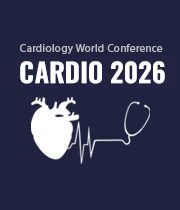Angioplasty
Angioplasty is a medical procedure designed to treat narrowed or blocked blood vessels, typically arteries, restoring proper blood flow. During angioplasty, a thin, flexible catheter with a balloon at its tip is inserted into the affected blood vessel. Once in place, the balloon is inflated, widening the narrowed area and compressing any plaque against the vessel walls. This process improves blood circulation and can alleviate symptoms caused by reduced blood flow, such as chest pain or shortness of breath. In some cases, a stent—a small mesh tube—may be placed during angioplasty to help keep the artery open. Angioplasty is a minimally invasive alternative to surgery and is commonly used to treat conditions like coronary artery disease, peripheral artery disease, and certain vascular issues. This procedure has significantly contributed to the advancement of interventional cardiology, providing patients with an effective and less invasive option for managing vascular disorders.

Arthur J Siegel
Massachusetts General Hospital, United States
Sergey Suchkov
N. D. Zelinskii Institute for Organic Chemistry of the Russian Academy of Sciences, Russian Federation
Narendra Kumar
HeartbeatsZ Academy, United Kingdom
Arthur J Siegel
Massachusetts General Hospital, United States
Yong Xiao Wang
Albany Medical Center, United States
Narendra Kumar
HeartbeatsZ Academy, United Kingdom



Title : Investigating the long-term follow up of atrial septal device closures in wales and england: A comparative analysis with Major Adverse Cardiovascular Events (MACE)
Meera Gopinath, Cardiff University Medical School, United Kingdom
Title : An adult case of polysplenia syndrome associated with sinus node dysfunction
Apoorva Tripathi, Oxford University Hospitals, United Kingdom
Title : Personalized and precision medicine (PPM) as a unique healthcare model through biodesign-driven translational applications and cardiology-related healthcare marketing to secure the human healthcare and biosafety
Sergey Suchkov, N. D. Zelinskii Institute for Organic Chemistry of the Russian Academy of Sciences, Russian Federation
Title : Yasser’s criterion of inferior ST-segment discrepancy deviations in AF with aberrancy and Sgarbosa criteria - a new cardiovascular discovery and management - a case report
Yasser Mohammed Hassanain Elsayed, Egyptian Ministry of Health, Egypt
Title : Successful treatment of sinus of valsalva aneurysm
Aina Jarillo, Universidad Anahuac Mexico Norte, Mexico
Title : Metabolic and echocardiographic predictors of ventricular extrasystoles burden in non-ischemic patients
Ahmed Ahmed Mohamed Hassan, Al-Azhar Medical School, Egypt